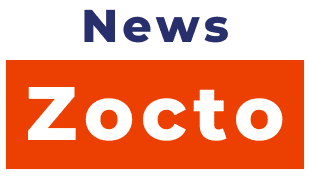Welcome to the enchanting realm of alternative medicine, where ancient traditions and modern practices intertwine in a kaleidoscope of healing approaches! From acupuncture to herbal remedies, practitioners and patients alike embark on holistic healing adventures that promise well-being and balance. Yet, as this vibrant world blossoms, so too do the challenges of effectively regulating these diverse practices. Join us as we journey through the twists and turns of alternative medicine regulations, where freedom and safety must learn to dance in harmony!
Navigating the Wild World of Alternative Medicine Regulations!
In a landscape as diverse as the remedies it offers, regulating alternative medicine is akin to herding cats. With thousands of practitioners and a smorgasbord of therapies, it can be quite a challenge for regulatory bodies to establish a coherent framework. The lack of standardized education and certification processes means that anyone can call themselves an expert, leading to a patchwork of qualifications and practices. This lack of consistency can leave patients scratching their heads, wondering whom to trust when seeking healing.
Moreover, the global nature of alternative medicine complicates regulation even further. Different countries have varying degrees of acceptance and oversight, leading to a scenario where practitioners might operate legally in one jurisdiction while being scrutinized in another. This creates an intricate web of legalities that can baffle both practitioners and patients, making it difficult for anyone to grasp the true legality of their chosen treatments. As the world shrinks through technology and travel, establishing a unified approach to regulation remains an elusive goal.
The challenge is further compounded by the tension between science and tradition. While many alternative medicine practices boast millennia of history, the lack of rigorous scientific evidence for some therapies can lead to pushback from the conventional medical community. Regulators must grapple with the question: how can we honor traditional wisdom while ensuring patient safety? This balancing act is a delicate one, as the quest for regulation must carefully navigate the rich tapestry of culture, belief, and evidence-based practice.
Balancing Freedom and Safety in Holistic Healing Adventures!
At the heart of the alternative medicine debate lies the fundamental conflict between individual freedom and public safety. On one hand, proponents argue that patients should have the autonomy to choose their healing paths, while on the other hand, regulators worry about potential harms caused by unregulated practices. Striking the right balance is crucial, yet inherently challenging. Regulatory frameworks must ensure that patients can explore their holistic healing options while simultaneously protecting them from potentially harmful practices masquerading as legitimate therapies.
The issue of informed consent plays a pivotal role in this balancing act. Patients need to be well-informed about the treatments they are considering, including potential risks and benefits. Creating clear guidelines for transparency in alternative medicine practices is essential. However, this can be a daunting task, as many practitioners may not possess the scientific knowledge or inclination to communicate these aspects effectively. Engaging practitioners in the conversation about transparency and informed consent could lead to a more conscientious approach and ultimately empower patients to make better decisions regarding their health.
Innovative solutions may pave the way for a brighter future in the regulation of alternative medicine. Collaborative efforts between regulators, practitioners, and consumers could foster a shared understanding of best practices and safety standards. By promoting education, research, and evidence-based approaches within the alternative medicine community, we can create an environment where safety and freedom flourish hand in hand. After all, a harmonious approach could allow patients to embrace the holistic healing adventures they seek while ensuring their well-being is safeguarded along the way.
As we wrap up our cheerful exploration of the challenges in regulating alternative medicine practices, it’s clear that this vibrant field is as complex as it is exciting. While hurdles abound in navigating regulations and balancing freedom with safety, collaboration and innovation may hold the key to a brighter future for holistic healing. So, whether you’re a practitioner, a patient, or simply a curious adventurer, let’s continue to champion safe, effective, and informed practices in the wild world of alternative medicine! 🌟




